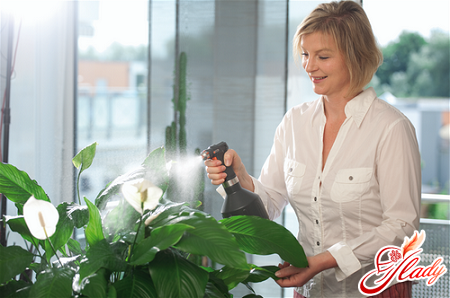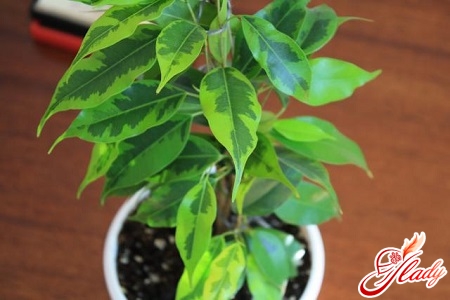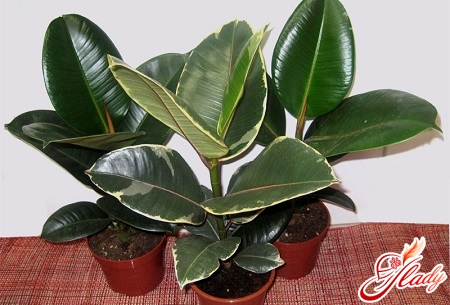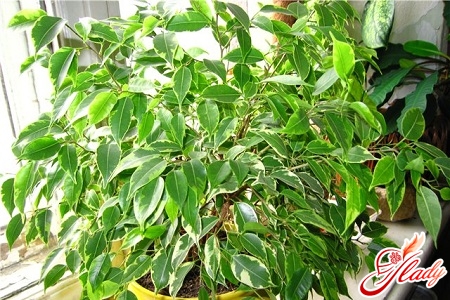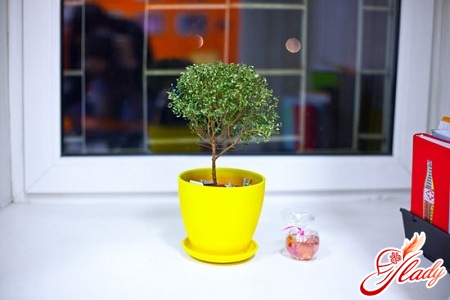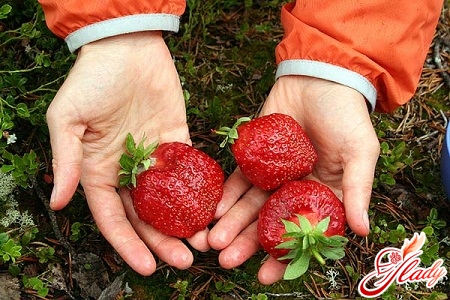 The first berry of the season!And how fragrant and juicy, sweet and beautiful! Everyone has heard about the benefits of this berry. And it has more vitamin C than lemon. And calcium, like milk, and antioxidants, like green tea... Healthy and tasty, interesting for both cooks and gardeners - no wonder it has become a popular crop in our summer cottages! By the way, strawberries are often (and mistakenly) called garden strawberries. Although strawberries are taller than garden strawberries, and their leaves are lighter, and the berries are smaller. But there is no particular difference in cultivation. Garden strawberries, or strawberries - planting and caring for them are almost the same. Therefore, we will not find out all the botanical subtleties, but talk about the general rules for growing these berries. How to grow strawberries (wild strawberries) on your site? Let's consider the features of planting and care that guarantee an excellent harvest of garden strawberries or strawberries (as we will call them). What will be the key to a good harvest? A correctly selected variety, a well-prepared place, competent planting and careful care. So...
The first berry of the season!And how fragrant and juicy, sweet and beautiful! Everyone has heard about the benefits of this berry. And it has more vitamin C than lemon. And calcium, like milk, and antioxidants, like green tea... Healthy and tasty, interesting for both cooks and gardeners - no wonder it has become a popular crop in our summer cottages! By the way, strawberries are often (and mistakenly) called garden strawberries. Although strawberries are taller than garden strawberries, and their leaves are lighter, and the berries are smaller. But there is no particular difference in cultivation. Garden strawberries, or strawberries - planting and caring for them are almost the same. Therefore, we will not find out all the botanical subtleties, but talk about the general rules for growing these berries. How to grow strawberries (wild strawberries) on your site? Let's consider the features of planting and care that guarantee an excellent harvest of garden strawberries or strawberries (as we will call them). What will be the key to a good harvest? A correctly selected variety, a well-prepared place, competent planting and careful care. So...
Choose a variety
There are a great many varieties of strawberries and wild strawberries.Breeders have done a great job here! Garden centers and nurseries offer us so many things. Berries of different ripening periods, different sizes, different yields, different shapes and different tastes. It is simply impossible to give unambiguous advice here. Each variety has its own advantages. It is best to choose zoned varieties for growing in a garden plot. They are best suited to the climatic conditions of specific regions. Then you should focus on your own goals and tastes. Choose a variety based on ripening period, yield, and sweetness of berries. Of course, you can buy elite varieties in nurseries. But only experienced gardeners should do this. If you are just starting to realize your gardening hobby, then opt for local varieties. They are less trouble and risky. But no matter which variety you choose, you should approach growing strawberries conscientiously.
We prepare the landing site
First, you need to choose this place.Slightly acidic or neutral soils are best suited for planting strawberries. The site for the bed should be sunny and level. However, gentle southwestern slopes are also suitable for strawberry plantations. Strawberries are not frost-resistant and overwinter well only under snow cover. Therefore, choose a place for planting where cold air will not accumulate and snow will not blow away. A damp place is also not suitable for strawberries. Before making a bed, treat the soil with ammonium nitrate (200 g per 1 sq. m) and any herbicides. For a strawberry bed, dig up the soil, loosen it with a pitchfork and level it with a rake. Sprinkle the dug bed with a two-centimeter layer of sand. This will create uncomfortable conditions for the appearance (and residence) of snails and slugs in your strawberries.
We choose the time of planting
You can plant strawberries from early spring untilautumn. In spring, at the beginning of the summer cottage season - the earlier the better (depending on the climate). In autumn, you need to have time to plant strawberries two to three weeks before the first frost (also depending on the region). The best time to plant purchased seedlings is spring (starting from mid-July). It is advisable to plant them in cloudy weather. And on clear and hot days - in the evening. If you plant strawberries with runners, then you need to do this after the runners are fully ripe - from the end of July to September. Dig up each rosette with a large lump of earth. Such a transplant will be less traumatic for strawberries. Seeds are sown at home (or in a greenhouse) in February-March (simultaneously with other seedlings). Seedlings from seeds are planted in an open area in May. You can grow seedlings in the summer (in a bed under a film). Young bushes are planted in a permanent place in August.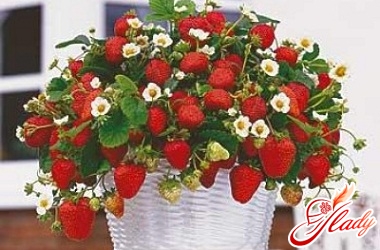
Choose the way of planting
There are three known types of planting material for strawberry beds:
- seedlings (mustache),
- from an adult bush,
- seeds.
If you don't set out to grow somethingunique, then young rosettes will be quite suitable material for your strawberry plantation. They appear on numerous runners of adult plants. You will find such runners in abundance in your (or neighbors') beds. Usually the runners are torn off. But for propagation, they are left on the strongest and most productive bushes. Another option for planting strawberries is division. Strawberry without runners is often propagated in this way. A strong and healthy bush is divided into several parts, which are then planted in new beds. Seeds are also used to grow remontant strawberries. This type of strawberry planting is also suitable for rare or unusual varieties. In addition, this method guarantees healthy plants. But planting strawberries with seeds is a very labor-intensive method. A lot of time passes from sowing the seeds to the first harvest. So this method is suitable either for very patient or very keen gardeners. Most prefer a less burdensome planting and a quick harvest. That is why we most often plant strawberries on our plots with seedlings from runners.
Cooking sprouts
Strawberries (garden strawberries) have a trickyfeature. The most fruitful bushes produce few runners. But the lush green and profuse specimens, from which you just want to pinch off a runner, are stingy with berries. Therefore, it is still better to take runners from less lush, but more productive plants. The rosettes should be the largest (the larger the bush, the larger the berries on it). Learn to distinguish genetically small runners from those that are not yet ripe (and therefore small). Genetically small ones have real leaves with already formed roots. The latter, with their modest size, do not yet have roots. It is quite possible to grow high-yielding plants from such runners. If you use rooted rosettes for planting strawberries, then they should be carefully dug up with a small lump of earth and immediately transplanted to a new place. Purchased seedlings should be washed before planting. To do this, prepare a solution: three tablespoons of salt, one teaspoon of copper sulfate and 10 liters of water. Soak the seedlings in it for 10-15 minutes, and then rinse them with clean water.
Planting seedlings
Rosettes with three or four are planted in the beds.leaves. Plant the bushes in holes at a distance of 25-30 cm. The distance between the rows is from 60 to 90 cm. It is very important that the heart of the rosette (the place where the leaves grow) is at the same level with the soil. Otherwise, the bush will either rot or dry out. In order for the roots to straighten out well, you can pour a mound in the hole and plant the seedlings on it, sprinkling them with earth. After planting, the strawberries need to be watered immediately. The first two days, the bushes need to be protected from the sun (covered with sheets of paper). Then, for a week, water two or three times a day from a watering can (so that the seedlings take root well). Then it will be enough to water the new bed once a week. If suddenly the young bushes decide to bloom, then the flower stalks must be removed (everything has its time). In August, the beds with young strawberries need to be fluffed a couple of times, and mulched in October. Correctly planted seedlings will already become strong and fluffy bushes by winter, which will ensure their good wintering and first harvest.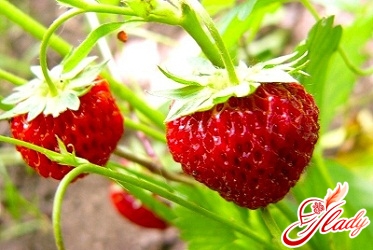
We care for strawberries
They say "what goes around comes around".To grow strawberries, "sowing" alone is not enough. This berry is quite capricious and requires constant attention and care. There are general rules for proper care of strawberries. Basically, they come down to watering and weeding. Watering. Without watering, there will be no good harvest. In summer, a bed with strawberries dries out quickly. Therefore, it is better to mulch it. Hay, mown lawn grass, wood sawdust are suitable for this. Mulch spread between the bushes will retain moisture and protect the berries from rotting. Weeds. Of course, weeds are not mortal enemies of strawberries - after all, they come from the forest, where they grow in the grass. But they can affect the quality of the harvest. Therefore, if you want to grow juicy and large berries, weeding, alas, is necessary. Despite the fact that strawberries themselves suppress weeds well, you need to remove the grass both between the rows and inside the bushes. Old leaves. Strawberry leaves should be constantly torn off when they turn red. This way the bushes will rejuvenate. It is also advisable to carry out radical rejuvenation. To do this, 3 weeks after the end of the berry harvest, mow down all the foliage. Why? To stimulate growth, get rid of infections and pests. Strictly speaking, mowing cannot be called a necessary measure. But in some cases it will not hurt. And certainly, there will be no harm from it. After mowing and collecting the foliage, it is advisable to treat the bush buds against diseases and pests and feed the strawberries with fertilizers. You need to be careful with fertilizers. If there is an excess of nitrogen fertilizers (for example, manure), large bushes with small berries will turn green in your beds. Therefore, it is better to add a small amount of rotted compost or manure shortly before planting. And use ash as a top dressing.
Strawberry "crop rotation"
For the proper cultivation of strawberries on your ownWhen growing strawberries on a plot, you should remember the following. The summer after planting (the first year of fruiting), strawberries produce a good, but not the highest yield. The second-year harvest is considered the most abundant: there are many berries and they are large. In the third year of fruiting, the berries become slightly smaller in size, although the yield does not decrease. This happens in the fourth year: both the yield is lower and the berries become smaller. Therefore, after three harvests (four years in one place), strawberries are removed. So, for a constant and good harvest, you need to have three strawberry beds: the first, second and third year of fruiting. It is advisable not to plant new strawberries where they have already grown. You can occupy this place for strawberries no earlier than after three or four seasons. Such simple and, for sure, useful recommendations will help you grow this wonderful, tasty, beautiful and healthy berry on your plot. Apply a little patience, effort, knowledge - and the success of your strawberry-strawberry "plantation" will be ensured! We recommend reading:




